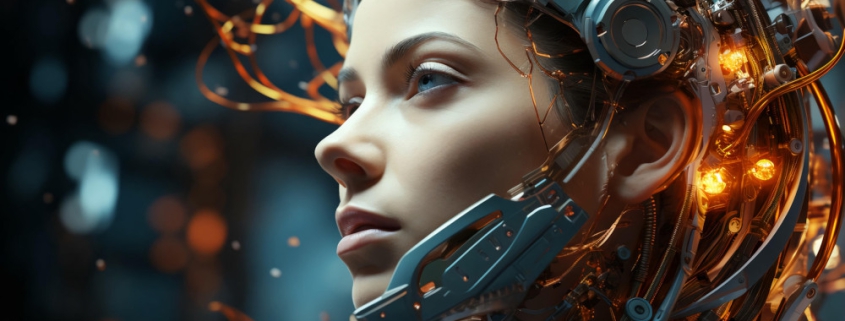Human spare parts galore – the next 10 years
What’s the biggest killer on planet Earth? It’s not the Islamic State or some other conflict. It’s not even cancer, bad driving, or cataclysms of Mother Nature.
It’s a much more terrifying opponent – heart failure.
A whopping third of the world’s population succumbs to some form of cardiac arrest at some point in life and it’s mostly due to hearts not being up to the job anymore rather than a sudden accident.
This fuels a huge industry where healthy hearts (and other organs) are ripped out of accidentally deceased humans and transplanted into those with failing organs. It’s not hard to imagine that there is a constant supply problem as there are always way more of those in need than those who can and will give their organs away.
What if the supply of organs would not be an issue anymore? What if healthy organs could be grown out of your tissue in some kind of apparel and when fully grown, they would be implanted into the waiting receivers?
In the movie “The Island” a utopian supposedly post-apocalyptic population was bred to provide exactly this – replacement organs for their genetic originators who were well-paying clients. The donors were clones, bred only to grow the organs necessary to survive function failure in their genetic blueprints.
But in the real world, things might get much less cinematic with similar or even better results and you will likely be around to see it all playing out.
In 2006, researchers at the Wake Forest Medicine School in Winston-Salem, North Carolina built the first bladder from the stem cells of a donor. The bladder was formed from a scaffold of bio-degradable material within which stem cells were flushed with a system. The stem cells arranged in the scaffold to eventually form a fully functioning bladder. What seems so evident and easy here is a complicated process and the researchers went through scores of failures – and sure still do.
As the stem cells were taken from the person eventually receiving the bladder, it’s no foreign tissue and hence there is no rejection when it is implanted.
A bladder is the first important step to show that the technology functions as a working concept. More complex organs will follow. Eventually, every bit of the body will be regrown in perfect shape and function in some sort of breeder device and implanted including parts of the brain and very complex organs such as livers.
But just imagine what that would do to the medical industry. If anyone could grow anything cheaply and safely and get it implanted, the currently existing organ donor system could be scrapped altogether.
But aside from the monetary consequences (this sure would be a lot cheaper), it would also eliminate waiting lists and make organ transplantation something that everyone can have easily.
You will surely say “This is going to be only for the rich as it will be very expensive”. But why should that be?
What reason would there be for this technology to not go the way every technological innovation goes eventually? It will be very expensive in the beginning but very soon, prices will drop and procedures will improve to the point where a new heart will be no more complicated and expensive a procedure than getting your nostrils removed.
But will it end there? Sure not.
If we can make a new organ, we sure would also very quickly start to work on how to fix certain problems that the original organ had in the first place. Or we would even try to add some enhancing technology before the flesh goes in.
Imagine someone with a biological sensor in the implanted organ that would allow taking precise measurements of any body function and the performance of the organ without any further procedure being necessary. Imagine some sort of functional improvement or even a technological add-on that would allow tackling even other problems that have little or nothing to do with the failing organ such as pumping insulin or helping with immune function.
But why stop there? Why not breed organs that are far more performing than the originals were? Imagine a genetically enhanced version of your lungs that would be able to absorb much more oxygen per breath and also filter out unwanted materials. Imagine that you could hold your breath for an hour or your eyes could see in the ultraviolet spectrum.
Fine particulates in the air – your lung won’t let it pass into your body. Scratch yourself – your skin will create new tissue to heal it in a few hours or even minutes. Need stronger knees? Your new ones will be able to withstand 20 times more weight and much stronger impacts. And on it goes.
But, if you get better, stronger, more performing, and resisting organs and all other body parts every time the originals in your body fail, how long will it take prospective clients until one of them replaces a healthy organ with an upgraded one? Don’t think that will happen? Look at what people do to themselves when it comes to plastic surgery and then tell me again that they won’t swap healthy tissue for better, healthy tissue. Especially when it becomes cheap and ubiquitous.
The most expensive part in the chain will be the surgical procedure when the organs are being swapped but maybe that’s also on the way out.
Because who says that the original scaffold in which the new organ is being built must be inside some breeding device?
Let’s imagine it would take some hours to build the new organ. It would make a lot of sense to put the receiver to sleep for those few hours and implant the seed through microscopic cuts allowing the organ to build itself inside the body while the old, defective one is liquefied and removed.
This would make those procedures a little more traumatic than getting the hard skin scrubbed off your feet.
There are sure still tons of issues to resolve but in 10 years we will be in the middle of a storm. In 20 years from now, receiving new organs won’t be a real issue anymore.


















Leave a Reply
Want to join the discussion?Feel free to contribute!